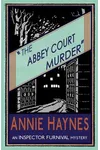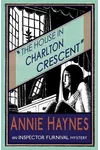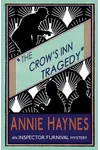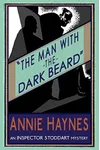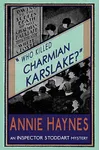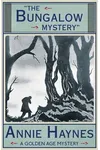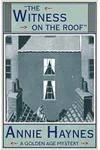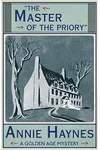Picture a spirited Englishwoman cycling to crime scenes, weaving tales of murder and mystery in the 1920s—meet Annie Haynes! A trailblazer of the Golden Age of detective fiction, Haynes crafted intricate whodunits that rivaled Agatha Christie’s, blending sensational drama with clever sleuthing. Despite her novels’ popularity, her own life remains a bit of a puzzle, making her story all the more captivating.
The Making of Annie Haynes
Born in 1865 in Ashby-de-la-Zouch, Leicestershire, Annie Haynes faced early challenges. After her father abandoned the family, she grew up with her mother and grandparents on the Coleorton Hall estate, where her grandfather worked as a gardener. This rural upbringing sparked her imagination, but it was her move to London in 1908 that ignited her literary career. Living with feminist journalist Ada Heather-Bigg, Haynes immersed herself in the city’s literary and early feminist circles, fueling her passion for crime fiction. Her fascination with real-life mysteries led her to visit murder scenes—like the 1908 Caroline Luard case—and even attend Dr. Crippen’s trial, gathering gritty details for her stories.
Annie Haynes’s Unforgettable Stories
Haynes debuted with The Bungalow Mystery in 1923, a gripping tale of a murdered artist and a mysterious woman, praised for its ‘cunning devices’ by The Guardian. Her Inspector Furnival series, starting with The Abbey Court Murder (1923), featured a tenacious Scotland Yard detective unraveling scandals, like a deadly rendezvous in a London flat. The Inspector Stoddart series, beginning with The Man with the Dark Beard (1928), showcased her knack for complex plots, as in The Crime at Tattenham Corner (1929), where a Derby Day murder ties to a horse race. Haynes’s style married 19th-century sensation novel drama—think secrets and stormy passions—with Golden Age detective logic, creating emotionally charged mysteries that kept readers guessing.
Her novels often centered on female protagonists navigating scandal and danger, reflecting her feminist influences. Despite battling crippling rheumatoid arthritis, Haynes wrote twelve novels, with her final work, The Crystal Beads Murder (1930), published posthumously and possibly completed by a literary luminary like Dorothy L. Sayers or Agatha Christie, adding intrigue to her legacy.
Why Annie Haynes Matters
Annie Haynes was a pioneer who helped shape the Golden Age of detective fiction, standing shoulder-to-shoulder with contemporaries like Christie and Sayers. Her novels, once lauded for their suspense and craftsmanship, were nearly forgotten after her death in 1929, but recent reprints by Dean Street Press have sparked a revival. Her bold approach—blending real crime research with fictional flair—inspired later mystery writers, and her focus on women’s emotions and agency added depth to the genre. Haynes’s rediscovery invites modern readers to explore a forgotten gem of crime fiction.
- Born: 1865, Ashby-de-la-Zouch, Leicestershire
- Key Works: The Bungalow Mystery, The Abbey Court Murder, The Man with the Dark Beard, The Crystal Beads Murder
- Died: March 30, 1929, from heart failure
Ready to unravel a classic mystery? Snag The Bungalow Mystery or The Abbey Court Murder and dive into Annie Haynes’s thrilling world of secrets and sleuths!
